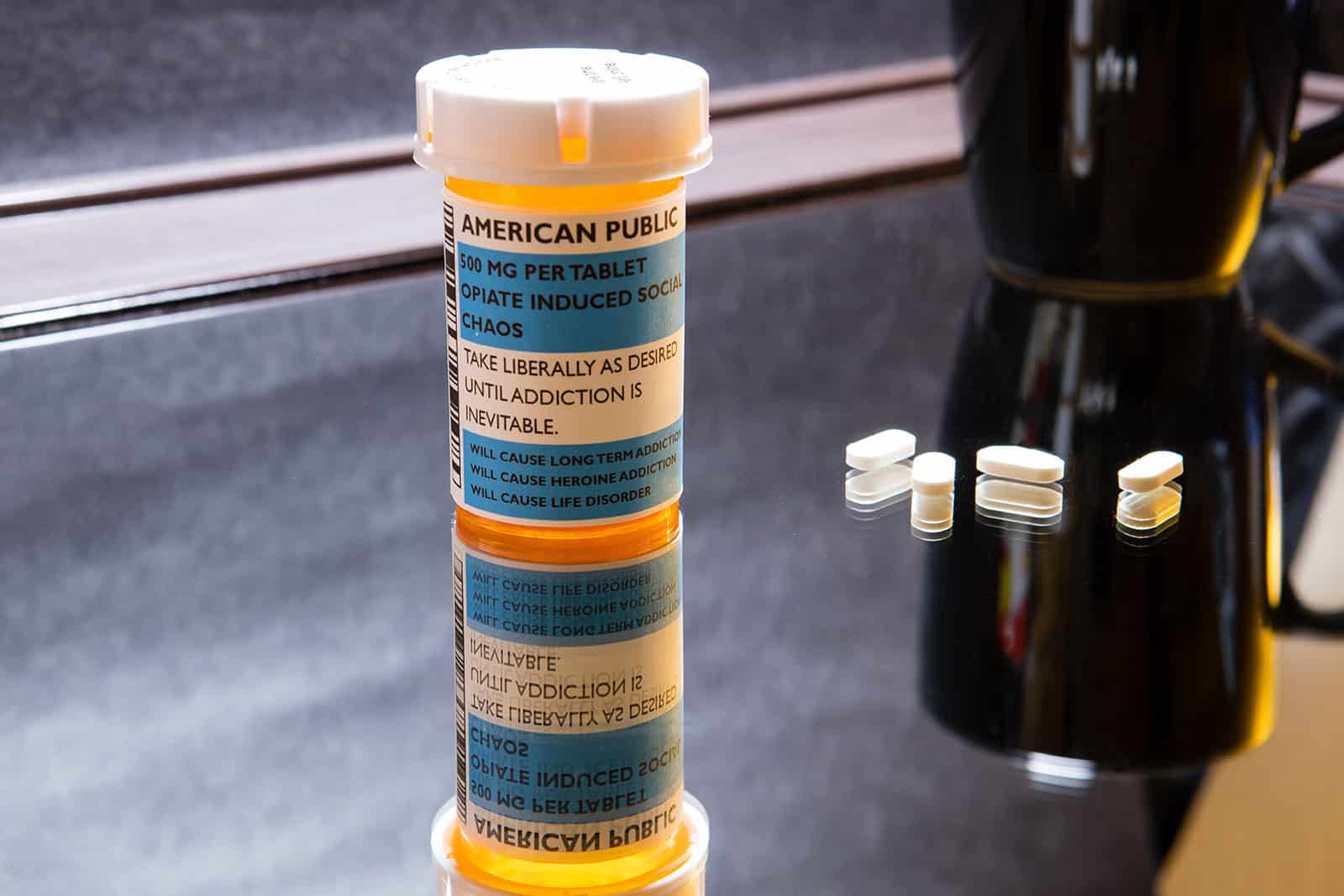For those unfamiliar with Percocet, it is the brand name for the prescription pain reliever that contains Oxycodone and acetaminophen. Delving further, Oxycodone is a semi-synthetic opiate, and acetaminophen is the active ingredient commonly found in Tylenol, Panadol, Paracetamol, and other popular over-the-counter pain relievers. Generally, physicians will prescribe Percocet to patients struggling with severe, short-term pain brought on by surgery or physical trauma. They also sometimes prescribe it to patients suffering from chronic pain caused by an underlying disease, cancer being one of the more notable ones. And it is pretty easy to see why many physicians consider Percocet a go-to for relieving both short-term and chronic pain.
Aside from those who are allergic to acetaminophen, Percocet is generally well tolerated and provides long-lasting pain relief, often keeping pain at bay for 3 to 6 hours at a time. Plus, it starts working fast; most people report experiencing relief from pain symptoms within 10 to 30 minutes after taking Percocet as prescribed by their physician. Like other prescription pain relievers, not everyone takes Percocet to escape the firm grip of pain; some take it explicitly to achieve a euphoric high, which can quickly open the door to addiction and other problems.
Table of Contents
- 1 What are the effects of a Percocet high?
- 2 The Consequences of Chasing a Percocet High
- 3 Overcoming an Addiction to Percocet and Regaining Control Over One’s Life
- 4 How Medication-Assisted Detox Helps People Struggling With a Percocet Addiction Get Through Rehab
- 5 The Role of Psychotherapy in Overcoming an Addiction to Percocet
- 6 Bottom Line
What are the effects of a Percocet high?

A Percocet high refers to the euphoric and pleasurable effects experienced by some individuals when they take Percocet, a prescription medication that contains a combination of oxycodone (an opioid) and acetaminophen (a pain reliever). Here are the key aspects of a Percocet high:
Effects of a Percocet High:
- Euphoria: Users often experience an intense feeling of happiness and well-being.
- Relaxation: A sense of deep relaxation and calmness.
- Pain Relief: Significant reduction or complete alleviation of pain.
- Drowsiness: A feeling of sedation or sleepiness.
- Warmth: A warm, pleasant sensation that can spread throughout the body.
Other Possible Effects:
- Dizziness: Feeling lightheaded or unsteady.
- Nausea and Vomiting: Some users may feel sick to their stomach or vomit.
- Itching: Itching, especially on the face and body.
- Constipation: Difficulty with bowel movements.
- Respiratory Depression: Slowed breathing, which can be dangerous at high doses.
Risks and Dangers:
- Addiction: Percocet has a high potential for addiction due to its euphoric effects.
- Tolerance: Over time, users may require higher doses to achieve the same effects, increasing the risk of overdose.
- Overdose: High doses can lead to life-threatening respiratory depression, coma, or death.
- Acetaminophen Toxicity: Excessive use can cause liver damage due to the acetaminophen component.
Signs of Overdose:
- Extreme drowsiness or difficulty staying awake
- Slow or shallow breathing
- Unresponsiveness or unconsciousness
- Blue or grayish skin, lips, or fingernails
A Percocet high is characterized by euphoria, relaxation, and pain relief but carries significant risks, including addiction and overdose. It is essential to use Percocet only as prescribed by a healthcare professional and to be aware of the potential dangers associated with its misuse. If you or someone you know is struggling with Percocet misuse, seek professional help immediately.

The Consequences of Chasing a Percocet High
“Percs” is slang for Percocet, and it is how some people ask for the drug whether they are trying to get it legally or illegally. With that established, it is easier to answer a commonly asked question, what do Percs do or, more specifically, what happens when someone abuses Percs? Firstly, when someone takes a high enough dose, either at once or over time, it triggers an intense euphoric high that many say is comparable to that of a heroin high. This high is the result of an uptick in the production of dopamine in the brain, a neurotransmitter that regulates mood, emotion, and a variety of bodily functions, which occurs when Percocet attaches to opioid receptors on nerve cells in the brain, spinal cord, gastrointestinal tract, and other parts of the body.
Of course, the intense euphoria brought on by this uptick in dopamine production does not last forever. When dopamine levels return to normal, many will do whatever it takes to get more Percocet into their system to continue riding the wave of euphoria that the drug provides. The more they do this, the more likely they are to develop an addiction and even engage in drug-seeking behavior. Examples of such drug-seeking behavior include
- Buying Percocet from street-level drug dealers
- Forging or altering prescriptions from their physician
- Stealing
- Doctor shopping
Another consequence of constantly chasing a Percocet high is that the drug can take a physical and psychological toll when someone consumes too much of it. According to a study published by the Mayo Clinic, Percocet can cause the following when taken excessively or in a manner inconsistent with a doctor’s orders:
- Black, tarry stool
- Fever and chills
- Dark or light-colored stool
- Dizziness
- Headaches
- Skin rash
- Loss of appetite
- Nausea
- stomach pain
- Halitosis
- Chronic fatigue
- vomiting up blood
- Jaundice
For some people, chasing a Percocet high can also have deadly consequences. In a study published by the Centers for Disease Control and Prevention (CDC), researchers revealed that roughly 44 people died each day from an opioid overdose in 2020. And those who were fortunate enough to have avoided such a fate still had to be hospitalized because they overdosed on an opioid drug. According to a 2008 study, the most recent and relevant study available, emergency room visits to U.S. hospitals involving opioid overdoses, including Percocet, increased by roughly 152% between 2004 and 2008. Most of those individuals rushed to hospital ERs after overdosing on opioids reportedly exhibited the following:
- Bluish-colored lips or skin
- Going in and out of consciousness
- Cold or clammy skin
- Extreme drowsiness
- General discomfort or illness
- Loss of consciousness
- Hypotension
- A weak pulse
- Shallow breathing
- Falling unconscious

Overcoming an Addiction to Percocet and Regaining Control Over One’s Life
Because Percocet is a Schedule II narcotic opioid drug, quitting it and regaining control over one’s life is not easy. Most people will need to turn to a licensed rehab facility for help. And truth be told, there is no better place they can be while working to break free from such an addiction. Since Percocet is a Schedule II narcotic, quitting it is more or less the same as quitting heroin or any other street-level drug; the first step is getting through detox. So that everyone is on the same page, detox is the body’s way of ridding itself of not only Percocet but also other harmful contaminants once an individual stops using. This all-natural and critical first step toward getting clean can trigger an array of unpleasant withdrawal symptoms. These symptoms are identical to the ones brought on by taking too much Percocet but with hot and cold flashes mixed into the equation. Fortunately, just about all of the nearly 14,500 licensed rehab facilities across the U.S. offer medication-assisted detox to help ease these symptoms.
How Medication-Assisted Detox Helps People Struggling With a Percocet Addiction Get Through Rehab
Many people who try to quit opioids eventually relapse, meaning they return to their old ways and begin abusing these powerful drugs all over again. In fact, one very credible study found that over 78% of people trying to quit opioids, such as Percocet, relapse while still in an addiction recovery program. One of the reasons why the relapse rate is so high is because of the withdrawal symptoms that present soon after an individual abruptly stops taking the drug. Medication-assisted detox, which involves the use of FDA-approved medications, along with 24-hour monitoring by licensed physicians, helps ease severe and potentially life-threatening withdrawal symptoms that often drive people to start using again. Some of the medications that rehab facilities offer to those who agree to partake in a medication-assisted detox program include the following:
- Methadone
- Suboxone
- Naltrexone
- Lucemyra
The Role of Psychotherapy in Overcoming an Addiction to Percocet
Breaking the cycle of addiction when it comes to Percocet or any other opioid is as much of a psychological endeavor as it is a physical one. Mindful of this, many rehab facilities offer counseling sessions with a licensed therapist throughout an individual’s entire addiction recovery journey. These counseling sessions, which can be one-on-one or in a group setting, will generally comprise 1 of 3 forms of psychotherapy, cognitive-behavioral therapy, contingency management, or Motivational Interviewing. Studies show psychotherapy helps individuals get through all aspects of addiction recovery and significantly improves their chances of staying clean long-term.

Bottom Line
All in all, the euphoric high that some people get from abusing Percocet is almost identical to the high derived from using and abusing heroin or any other opioid. And this explains why many desperately want to get their hands on more of it as soon as the drug’s pleasurable effects start to wear off and, as a byproduct of doing so, become addicted. Having said all of that, don’t hesitate to contact a rehab facility in your area for help if you believe you or someone you love has a problem with Percocet or any other opioid drug.
FAQ
What is the highest strength of Percocet?
Is there a difference between Oxy and Percocet?
Is Percocet stronger than plain oxycodone?
What do Percs do?
Published on: 2022-07-29
Updated on: 2025-04-14



